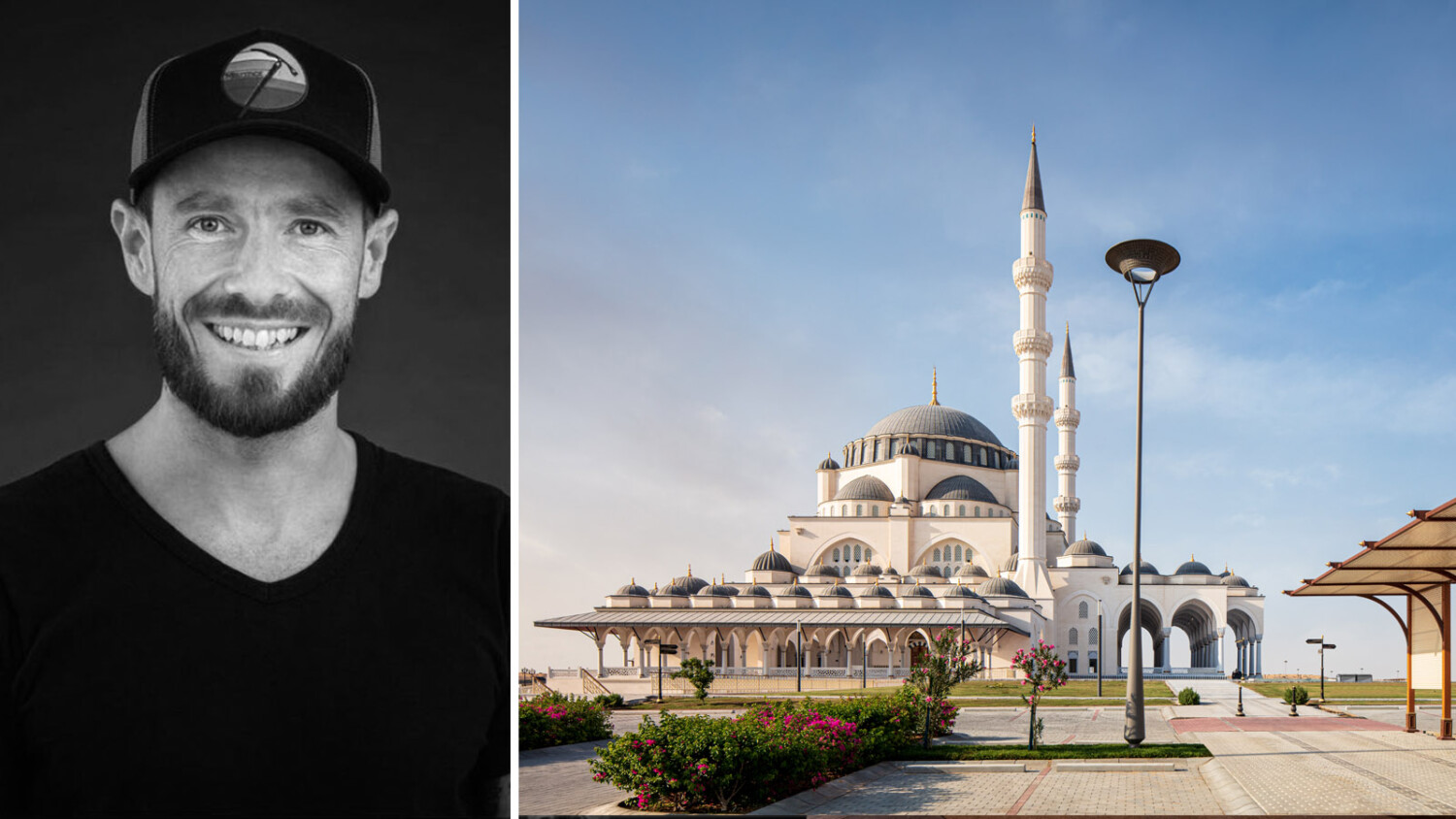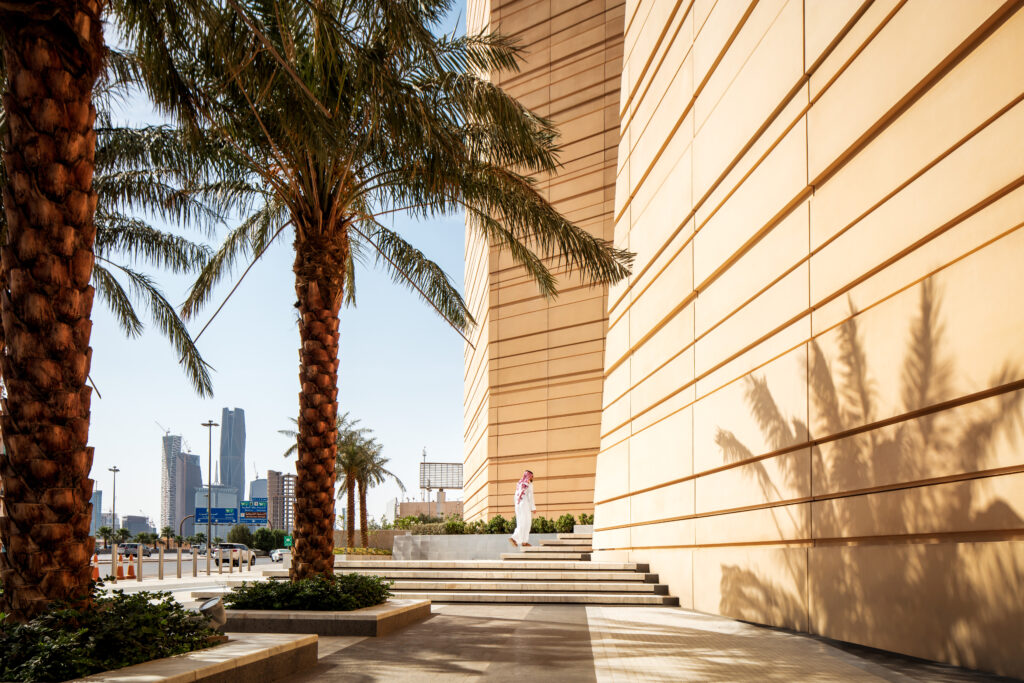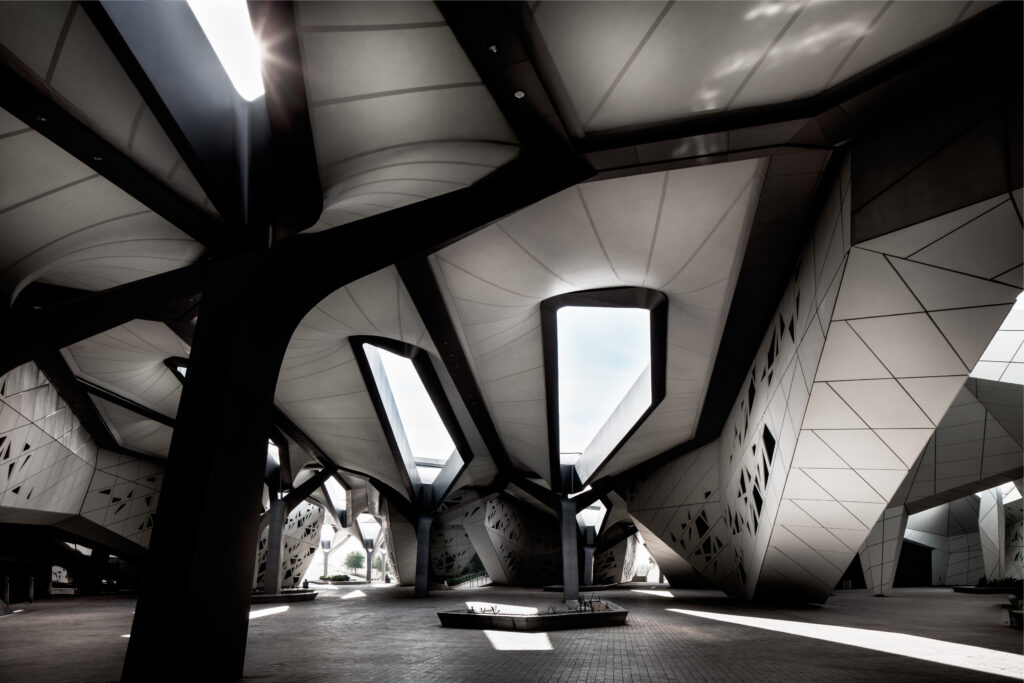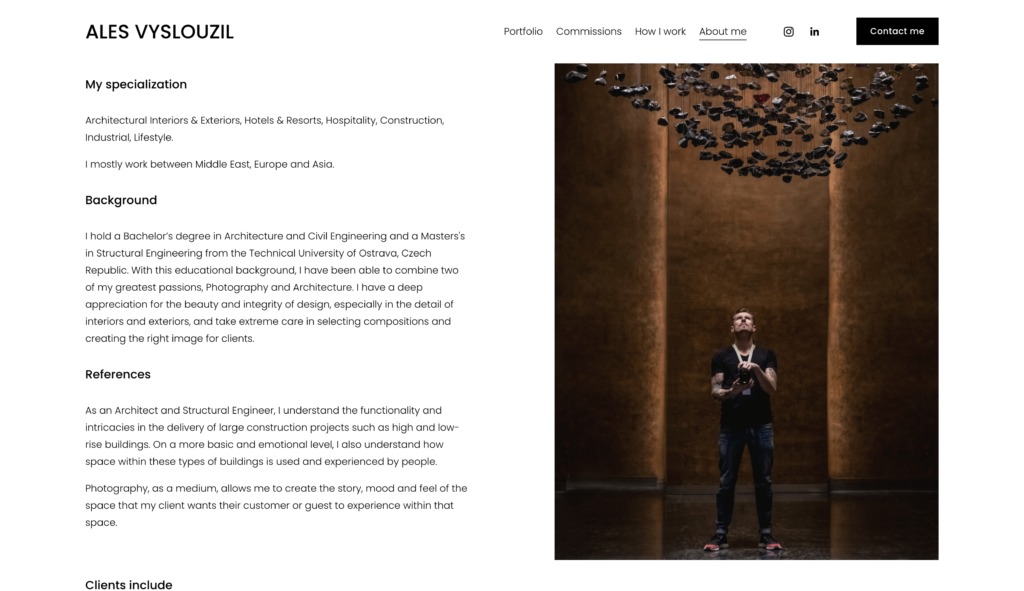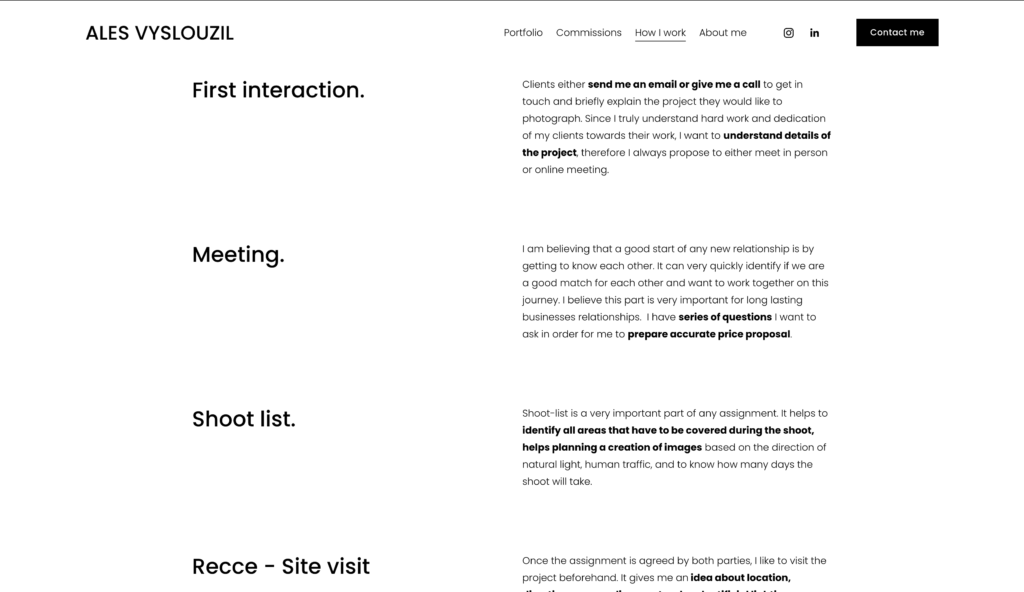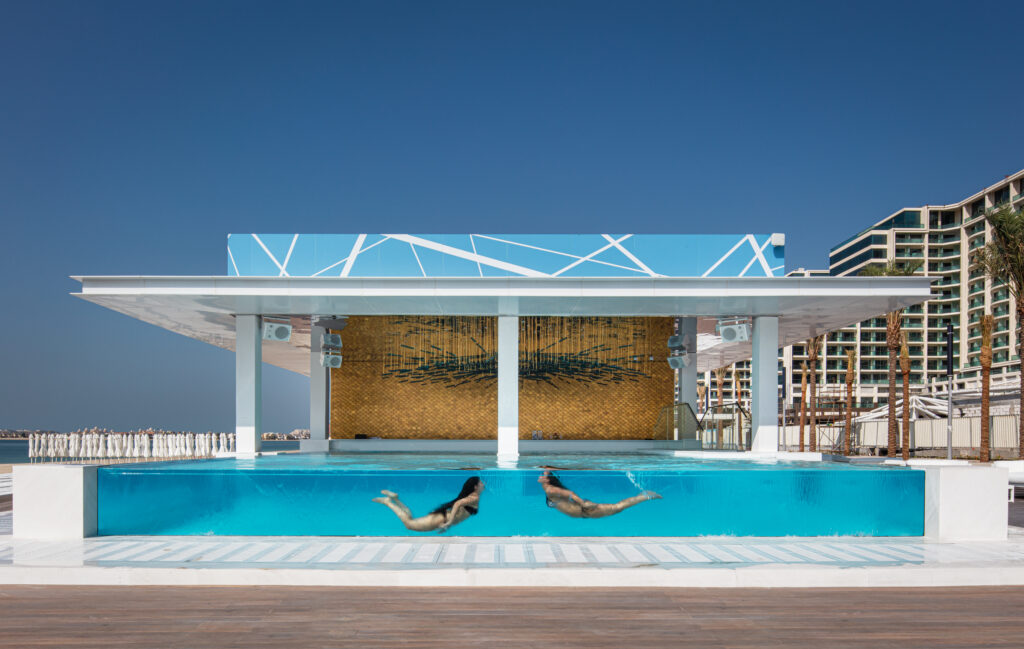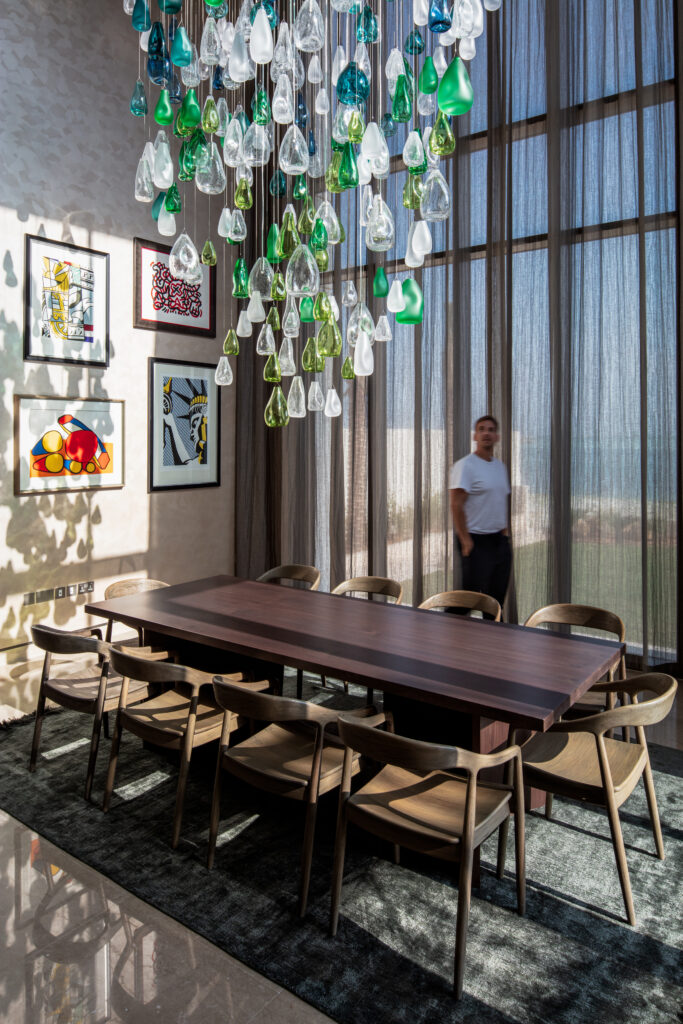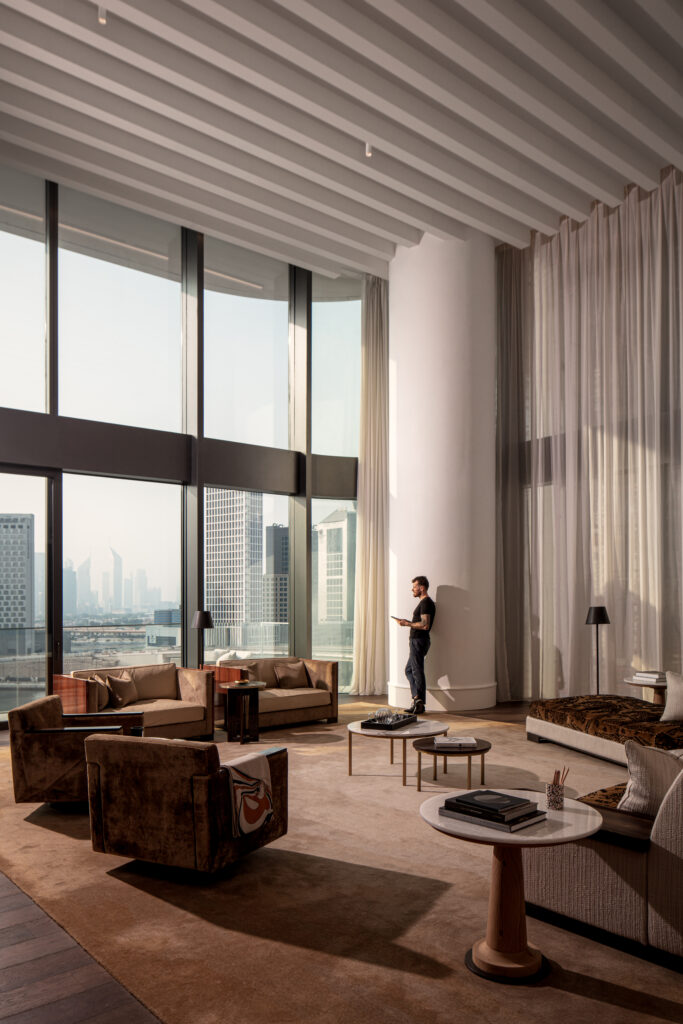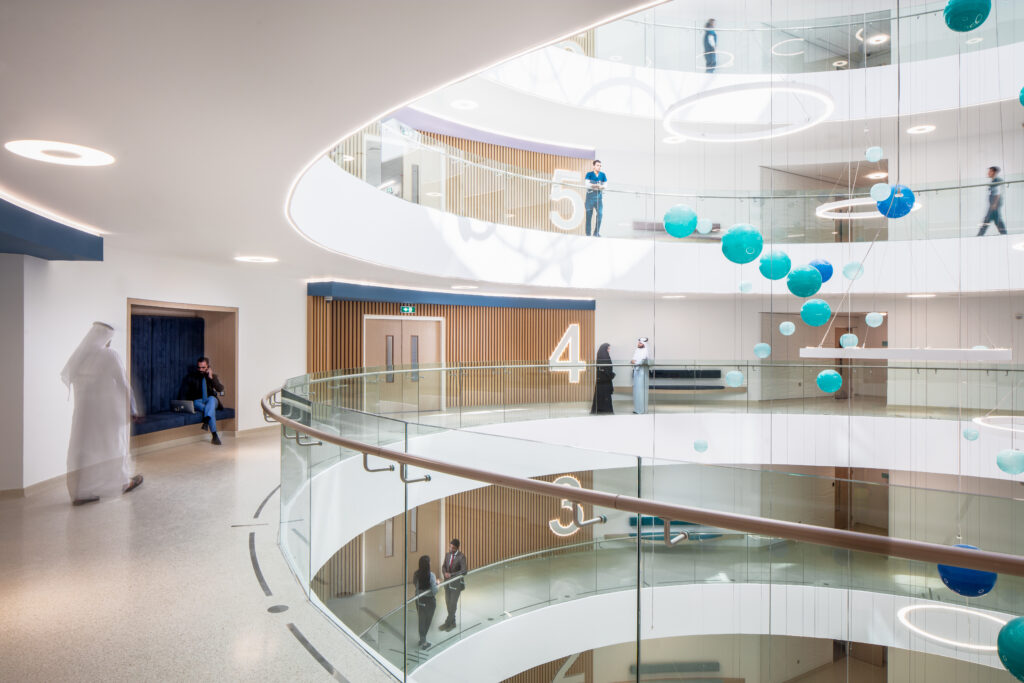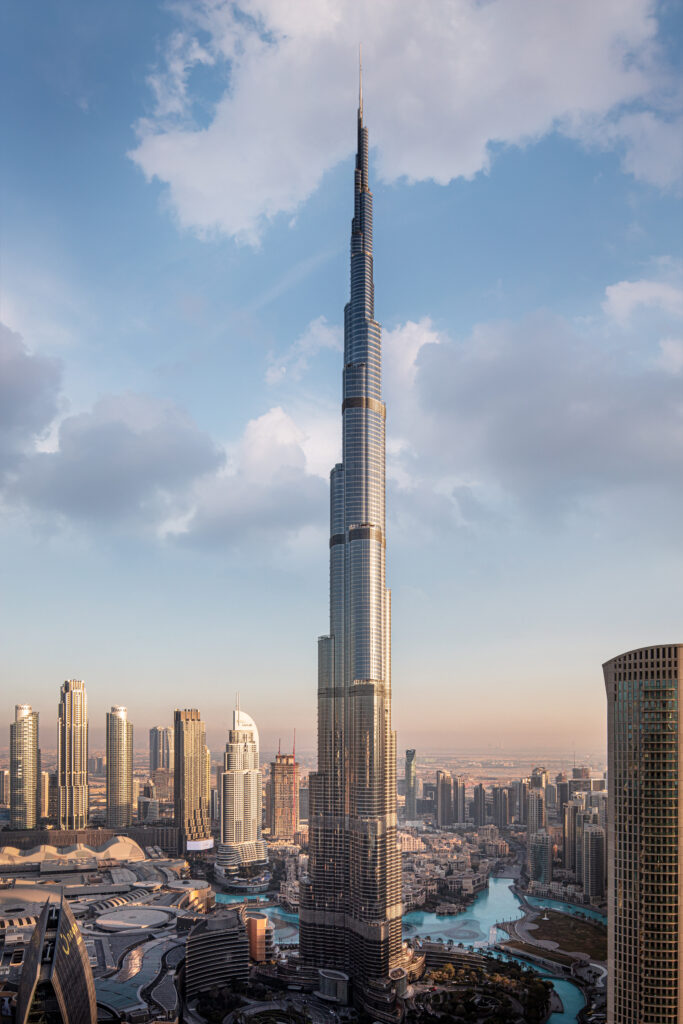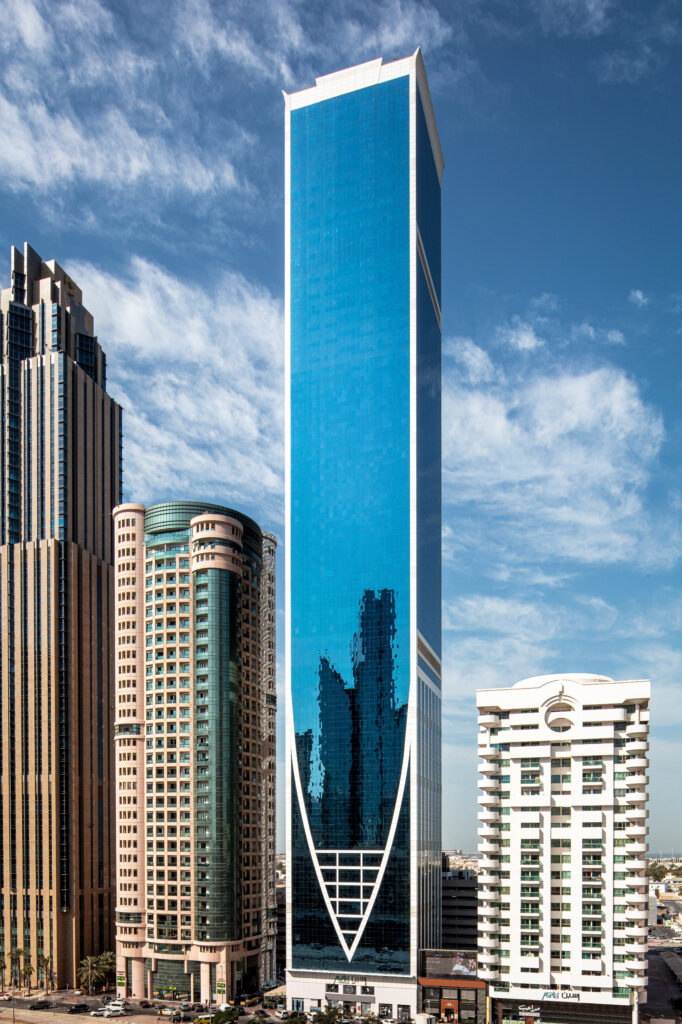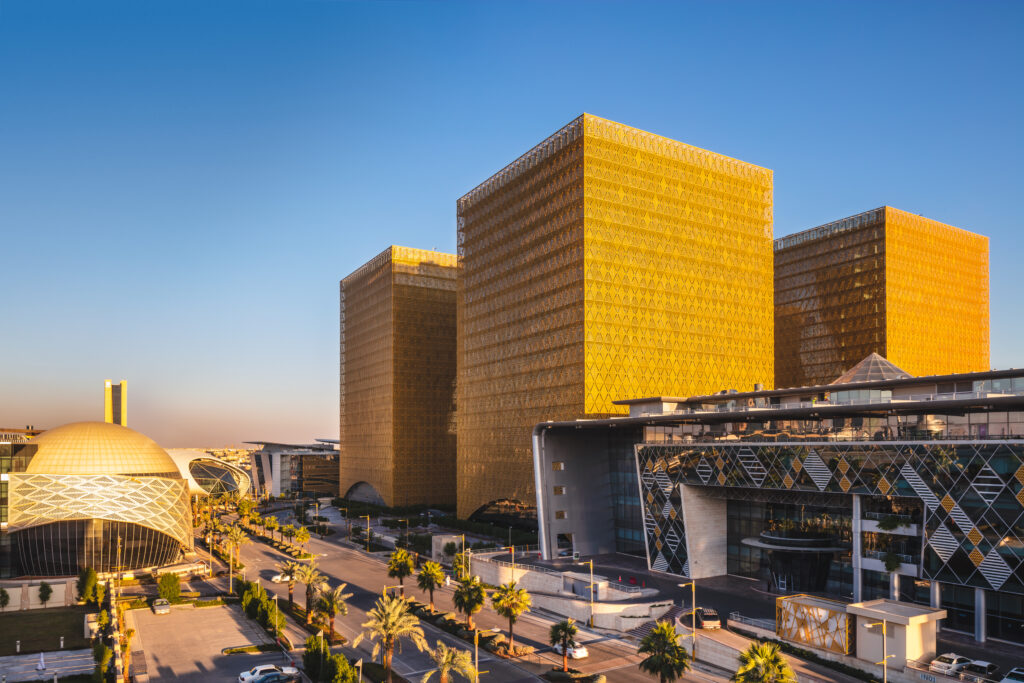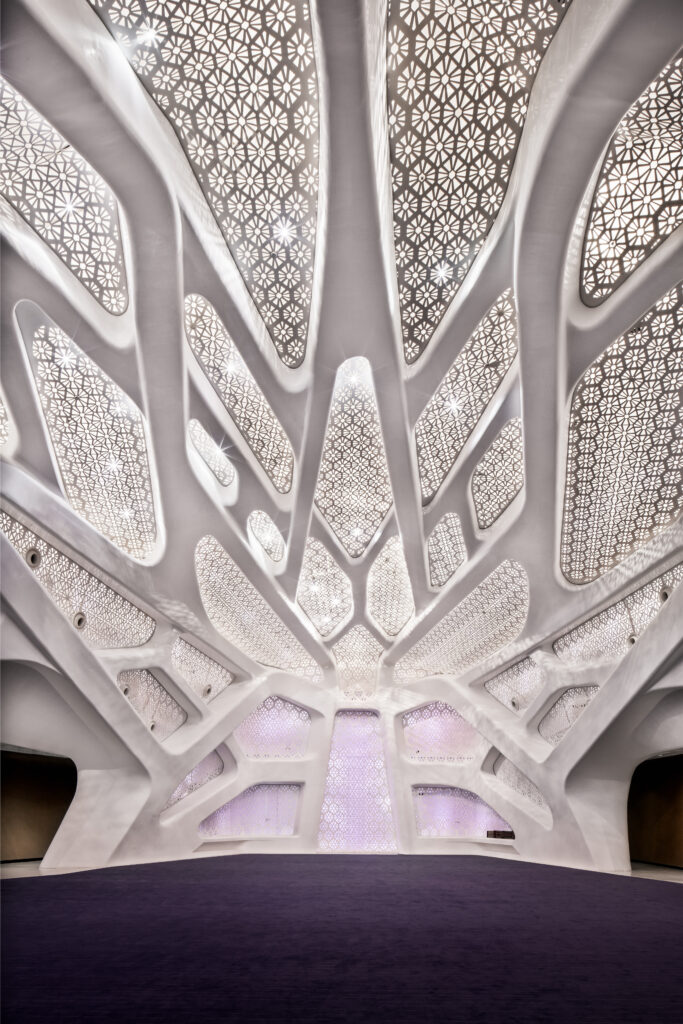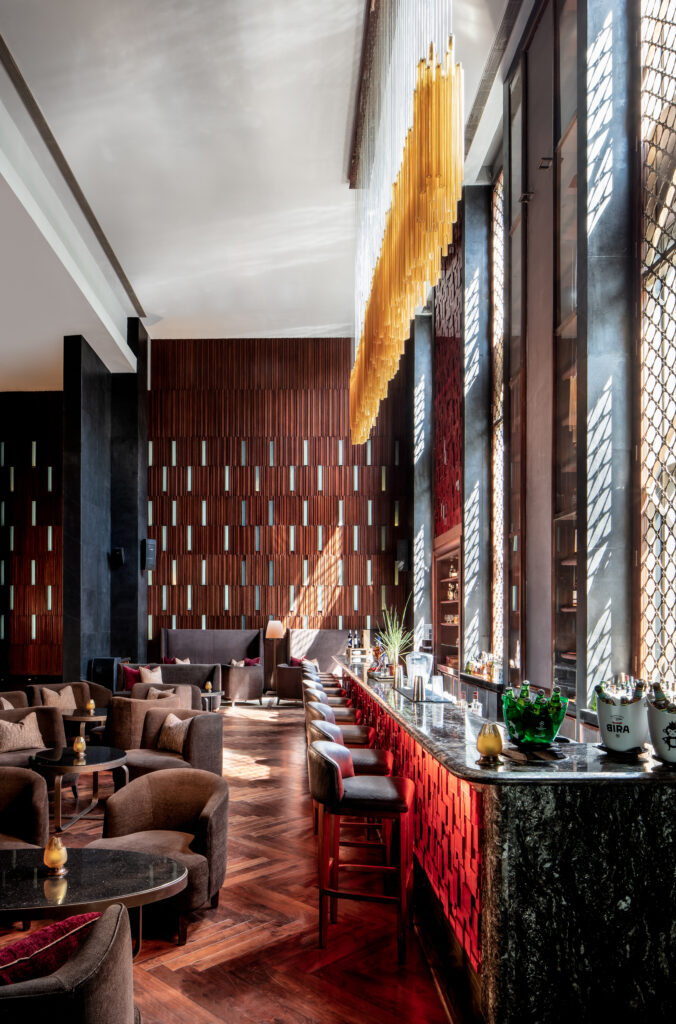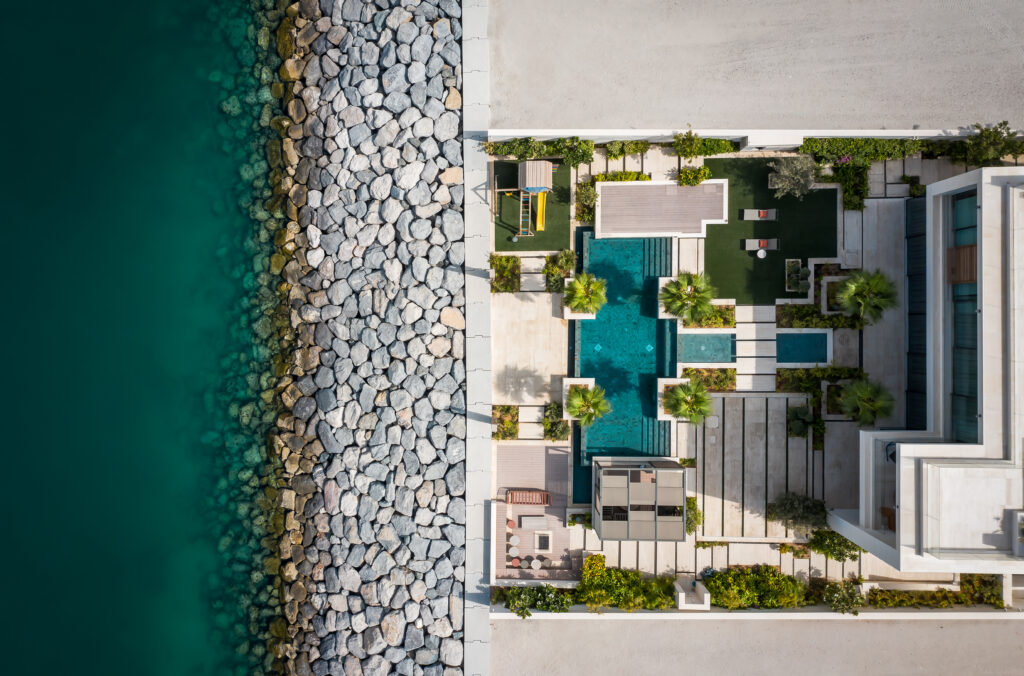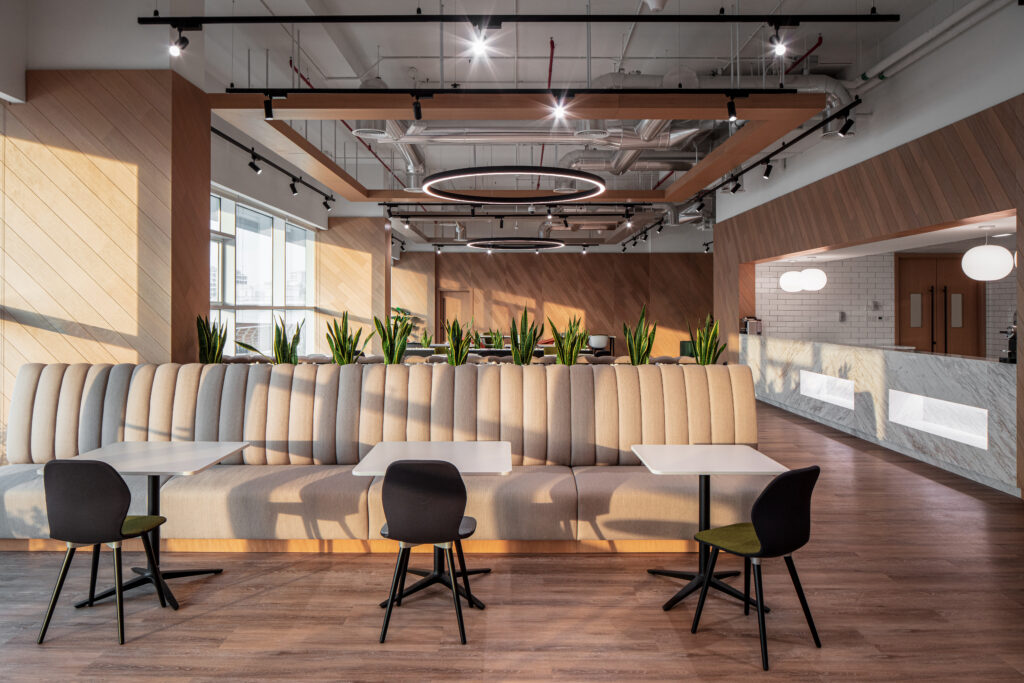Engineer Turned Photographer Ales Vyslouzil Gets A Foothold In The UAE Market
Ales Vyslouzil is an interesting man. He has moved back and forth between the Czech Republic and Dubai. Ales was once an engineer but decided he hated it and changed plans after a heart-to-heart chat with a friend. The trajectory of his career and his life is fascinating and empowering. Ales has been through it all — a big move, a career reset, family trouble — and through his great attitude, hard hustle, and willingness to take feedback, this fledgling photographer has really gotten a strong foothold as an architectural photographer in Dubai. There’s a lot to learn from Ales, from his business practices to his solid understanding of what architecture is designed for, so let’s jump in!
Lexi: Hey Ales, I was reading that you have your Bachelor’s degree in Architecture and Civil Engineering and a Master’s in Structural Engineering from the Technical University of Ostrava, Czech Republic. Can you tell me a little bit about your experience as an architect and how you transitioned into photography? Did you start your architecture photography career while you were in the Czech Republic, or did that happen after you moved to Dubai?
Ales: Well, my story is long enough for a podcast but I’ll try to narrow it down. My story begins 21 years ago when I decided to study Civil Engineering in high school at the age of 15. It was a bit of an egoistic way of showing my parents that I could do better than them, despite the hard time I had in math and physics. From the beginning, I fell in love with engineering — listening to my teachers talking about buildings, construction sites, and the industry. In the Czech Republic — at least at the time of my studies — we had a very straightforward education path. After high school, you either work or go to university. I decided I wanted to know more about buildings, architecture, and engineering. During my studies, I was always fascinated by buildings but struggled to master design and the creative process of architecture. Anyhow, I finished my education and got my first job as a Structural Engineer and consultant for a Belgium-based company in their Czech office branch.
My photography journey started a bit before I finished university. It was mostly a medium to document my rock climbing trips and traveling around the USA and Europe. I never got into the technical details of my camera, but was interested in manual settings — iso, shutter speed, and f-stop. All the other settings? No clue what they do ☺
In 2012 I had an opportunity to work in Dubai, so I said yes and moved here. The beginning was hard! I did not speak English well, I did not know people, I did not know the culture, and I hated my job, especially the long working hours. It took me nearly 10 years, moving from one company to another, back to Europe, and then back to Dubai again until I realized I actually absolutely hate engineering, designing buildings, and architecture. I hated it all! At the time I was not sure what I hated about it so much, but now I know — I did not like sitting in the office, designing, re-designing, revisions, value engineering, submitting reports and all that crap architects and engineers have to do.
So I left the industry, not knowing what my next mission was. I was left in tears and frustration.
Just 4 years ago, my good friend came from Australia to see me here in Dubai. One evening we were sitting in the garden drinking beer and I was nearly crying because I did not know what I was going to do with my life. I had a small daughter, was in the middle of a divorce, did not have an income, and I was living in quite an expensive city. My life was an absolute mess. My friend told me to look to my passion “Ales, why don’t you start a photography business?” I did not even know that was something I could make a living off of, nor did I know that “Architectural Photography” existed. It was absolute luck for me to find out that I could actually photograph buildings — something I loved so much, but hated to design…man, it was an awaking call for me!
Straight from the day I found it out about architectural photography, I started working to establish myself and called myself an Architectural Photographer based in Dubai, UAE. This is how my new life started.
You have such a great website! I felt like I knew you after I read through it and checked out your work. One of my favorite parts is your “how I work” section. I think it instantly sets the expectation for working with you and gives your clients a roadmap to their shoot. Have you found this part of your website to be successful / a helpful tool in your workflow?
This is a funny one. My new website was recently launched in February 2021. My amazing friend, who works for one of my clients as a digital marketing strategist told me that my previous website was shit.
I said, ‘ok, but all photographers pretty much have the same one.’ He said to me ‘I understand you are a photographer and you use your website as a portfolio, but you need to also understand that clients are looking for a professional B2B solution. They don’t have time to study your website, looking for details and phone numbers. You need to present yourself as a business, solving an issue of your clients.’ Therefore I believe, photographers’ websites should change and improve. It can’t just be a portfolio anymore. Instagram fulfills that need. Your website needs to be presentable as a business.
From a consumer standpoint, I hate when I’m looking for some services online and I can’t find any information about the people involved in the business. I totally believe that it’s essential to have details about yourself, your business, and your partners. Transparency is the key.
Ales, you have this incredible knack for making your pictures feel full of life. There is always somebody walking through the scene, or a bird flying by, water shimmering, etc. I’ve even noticed that sometimes you add yourself into the frame. What’s your approach to adding people into your images? Are you usually hiring and directing people/models/talent, or is it more of an organic kind of thing where you are just documenting whoever is passing by?
Wou, this is very powerful feedback for me and it makes me very happy. I feel like I am doing something right!
Since I am a freshman in this business, I try to make time to study different photographs and compare them to my work. Sometimes this does feel very unhealthy to me as I feel I will never reach that level, but I know I will. Once I said to myself that I want to combine Mike’s amazing perfection to details and fine-art approach to his work with the mood and feel of Fernando Guerra where the life and mood come in.
During my studies in engineering and architecture, all books talking about design, dimensions of rooms, spacing between furniture, size of the doors based on occupancy, floor height, and all dimensions are based on human scale and how people interact with the space. I remember every image had a person as a comparison to understand the scale and size. Every home, school, and public space, is purposefully designed to be used by humans. This is what I always try to represent in my work. I truly believe that architectural images should have people in them. Yeah, design can be different as we want to showcase the beauty of details and the expensiveness of individual items.
I was very lucky to start working with Hilton Hotels & Resorts early this year and I had multiple discussions with the marketing director of one of their hotels about the old-school approach to their photography. I think hospitality should bring a bit of an architectural approach to their images. It can be amazing to create expensive fashion-lifestyle architectural photography.
How do I shoot with people? Architectural clients do not want to spend money on a cast, so I either propose to bring their employees on set, sometimes they bring family, some friends. In public spaces, I mostly wait for random people to pass by. If the project is deserted, I do it myself. A couple of months back, I was shooting a project for RSP Architects and it was so empty that I decided to use myself and my daughter. They loved the images ☺
I think that you have a unique perspective as both an architect and a photographer. What do you think makes a great architecture photographer? What qualities are you trying to infuse into your own work?
I feel like I need to reach a full decade of being a photographer and then I might be able to give a proper answer!
I believe what makes an architectural photographer stand out is to be true to yourself, believe in yourself, and be genuinely interested in your client’s work. We need to understand this business is not about us, it is about them. We create images of their work, their passion, their love of architecture and design. Think of it like this — why do people love to dance to house music? Because it is how it makes them feel. It is not about the face and ego of the DJ. The DJ’s work is to bring their passion and knowledge to make people feel great and want more. We have to bring this feeling to our clients, so they feel they want more of you and your work. I do also believe that we should charge more money, so we get less pain-in-the-butt-work and we can fully engage with clients. When they value our work, we can afford to give them 110% of our attention. It also allows us to shoot better projects, nicer buildings, and work with better clients.
What are your favorite types of projects to photograph?
I love shooting schools, even though I haven’t done many. A few years back, I got to work with HLM Architects on an Abu Dhabi special school for kids with autism. It is the first school of this kind in the UAE. I loved to shoot in such an environment, being surrounded by kids. In fact, I love environments and shoots where people are involved in general. Another project I am super excited about is the new ROVE Hotel located in Dubai Expo 2020, with interiors designed by RSP Architects. I’ll have half of their office employees on the set with me! I just love to see people being engaged with the environment, either architectural, hospitality, construction site, industrial environment etc. Working with people is very satisfying for me.
The UAE is home to some of the coolest buildings in the whole world. You are basically living in an architectural photographer’s playground! What is it like living and working there? Is the market competitive? Do you find that your clients in general have a good knowledge of how architectural photography and the more nuanced bits like licensing and cost sharing, etc, work?
I am super grateful that I am starting my architectural photography journey here in the Middle East. Things are moving fast here and in my case, I scaled up very quickly within my first 3 years. Covid hit me hard as well, but it’s ok and I believe it will again open to new projects and opportunities.
Yes, UAE and the whole Middle East is a great playground for photographers as we have many interesting projects. I believe we currently have more landmark buildings, rather than cool and creative architecture, but I m sure it will come with new and young architects and also the new generation of investors. I like some great buildings such as Index tower by Foster and Partners, or the old World Trade Centre by John Harris as they are purposefully designed for the Middle East. I love to see projects and new buildings designed with respect for the local environment and culture. We have many old amazing buildings, but I would love to see more of them in the future. The market is competitive as anywhere else. There are photographers who charge 1/10 of my price and also who charge 5x more than me ☺ There is a market for everybody. Since the beginning, I’ve been working with the great photographer Gerry O’Learry, who is mentoring me and helps me a lot with the business side of photography. This is a tremendous help for me. It also helped me to position myself on the market and not damage the market (or myself) with cheap prices. Generally speaking, you will always find photographers and all kinds of business destroying the market for the sake of short-term success, but long-term failure.
From my short experience, I think clients have very little knowledge of photography, working with photographers, knowing what they want and how much it will cost. Licensing is a big issue here because many, many photographers don’t even have a contract and give all images for very little cost. I’ve had cases where clients stole my images and used them for their marketing activities. It drives me nuts and I get extremely angry about it. I would rather give them images free of charge with a properly signed licensing contract than see them stolen. Overall, I love this market and I also love to educate my clients. Those who are really interested in working with me always appreciate our open conversations and seeing my workflow during the shoot.
Speaking of the back end of things in business, what are some non-negotiable items in your contract?
My 100% non-negotiable item is that I do not deliver final images without final payment. Most of the time I don’t even start with post-production unless the payment is settled. A 50% down payment is also super important for me, especially with new clients.
I have quite a basic two-page contract, but I need to have it all signed. At the beginning of my career, I felt a bit odd about doing it, but now it is very important and I also think it makes you look more professional and organized. It also helps me decipher what clients are actually interested in working with me, and who is just fishing around.
I have also recently started to implement new tactics when I receive an inquiry for the shoot and the clients ask for the price. I don’t like to share the price firstly, therefore my first response email to enquiring clients is something along the lines of ”Hey, thank you for your email and showing interest in working with me. Would you mind getting on a quick call/Zoom meeting so I can understand the details of your shoot?”
This very quickly shows me who is interested, and who is just fishing for the cheapest price.
I saw that one of your hobbies is climbing! That is so awesome. Tell me a bit about how you got into it! Do you feel there are any parallels between practicing a hobby like that and improving in your work?
This has been a big passion of mine for the past 16 years. I started climbing when I was a 20-year-old university student. I have been in sports my whole life, and then I found climbing and bouldering. It kind of changed my life and the older I get, the more passionate I am. Since I live in Dubai where we are quite limited with climbing, I focus more on bouldering, where I can have shorter and more frequent training sessions. I also have a small climbing wall at my apartment, where I spent my whole lock-down training with my amazing friends.
I am 100% sure that climbing is one of the best sports to teach you about patience and slow and steady progress. It takes tremendous time, energy, and patience to progress even one grade without injury. Whether you focus on climbing, meditation, or even cooking and you find that it makes you happy and helps you to disconnect from everyday life, that is great. A photography business can be an overwhelming and stressful 24/7/365 job, therefore try to find peace of mind elsewhere.
As the famous UK climber Ben Moon says, “Train Hard, Climb Harder!” You can bring this statement to your photography business and life in general!
I’d like to thank Ales for taking the time to share so much about his life and business with us here at APA! See Ales’ great work (and great website) at photoales.com and pop over to his Instagram @alesphotography_arch
